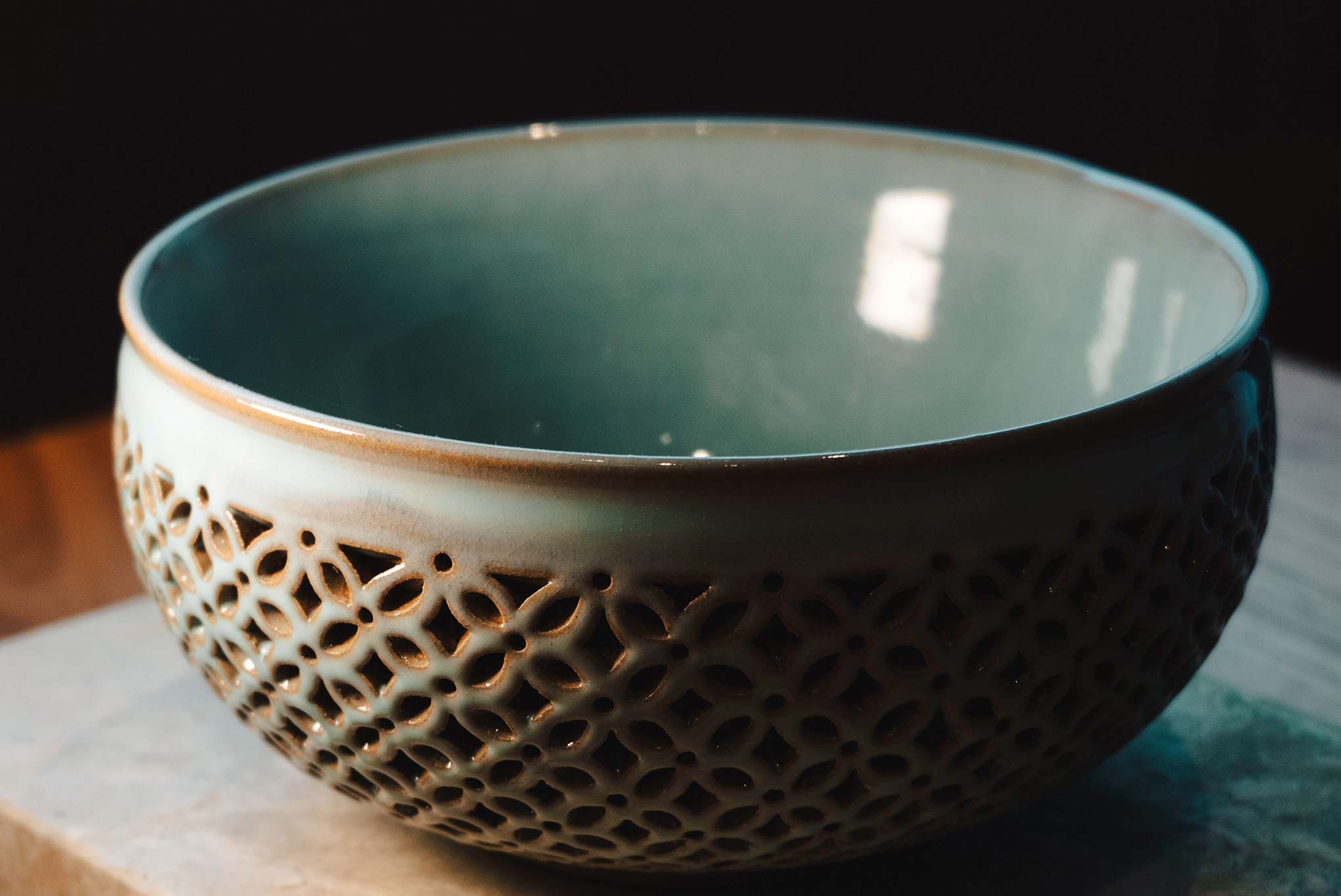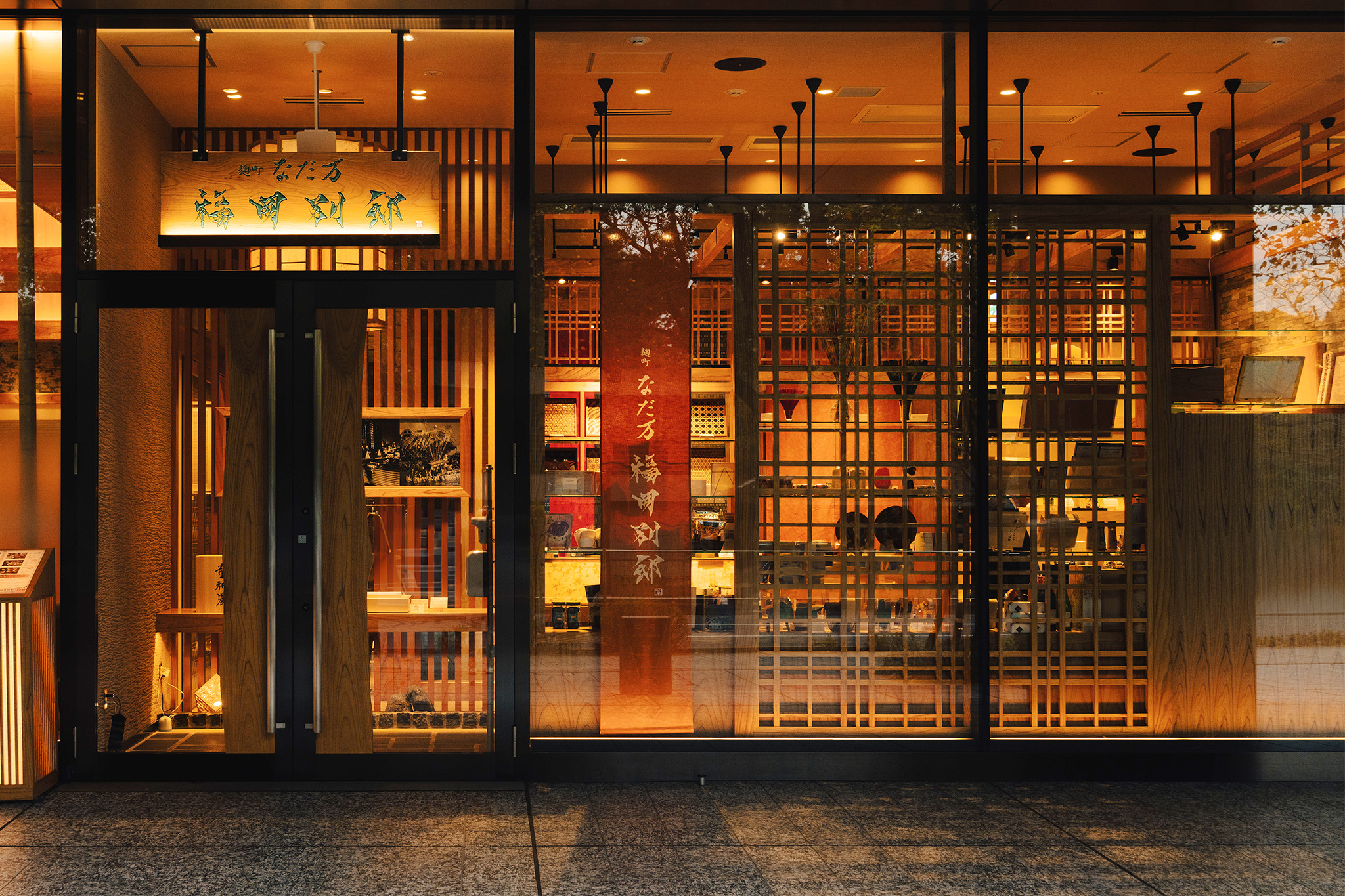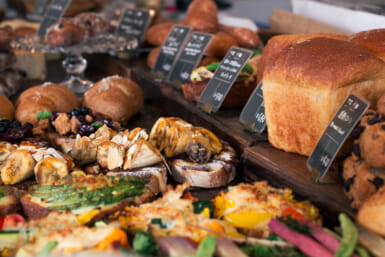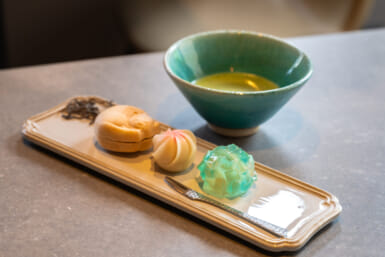At Kojimachi Nadaman Fukuoka Bettei, in Tokyo, meticulously prepared Japanese kaiseki meals draw on the seasonal bounty of Fukuoka Prefecture’s farms and fishing fleets. But the restaurant isn’t only bringing Fukuoka’s unique food culture to the Japanese capital. It’s also showcasing the depth and diversity of Fukuoka’s traditional crafts.
That begins the moment you set foot in the restaurant. Greeting guests at the front door is a small statue of a child with delicate, hand-painted features — a Hakata ningyo (Hakata doll) by artist Shinkyo Nakamura; the first of these delicate figurines was created in the prefecture nearly 400 years ago.

Refined Dining
Opened in January 2023, Kojimachi Nadaman Fukuoka Bettei is a collaboration between the Fukuoka Prefectural Government and Nadaman, a brand of Japanese restaurants founded in Osaka in 1830. Nadaman’s history in fine dining is well established: Its restaurants have appeared in the novels and journals of Japanese writers Soseki Natsume and Ogai Mori, and hosted dignitaries and politicians from around the globe.
Dining at Kojimachi Nadaman Fukuoka Bettei is a chance to sample some of the prefecture’s culinary classics, ranging from Itoshima pork belly shabu-shabu and Hakata jidori mizutaki (a popular chicken hot-pot dish) to tender Hakata wagyu steaks from cattle raised for 20 months on certified farms.

Centuries of Craftsmanship
The restaurant’s refined decor is dominated by the work of Fukuoka’s artisans: tables made from polished chinaberry wood; elegant Yame-sudare bamboo blinds covering windows; Kakegawa rush-straw tatami floor mats of alternating pink, sea-green and yellow stripes; latticed Okawa kumiko woodwork adorning doors and lamps; and framed bolts of exquisitely patterned Hakata-ori, used for obi (a belt worn with traditional Japanese clothing) and invented nearly eight centuries ago.
In the largest private room, a lamp casts a warm light from above. The lampshade is made of a durable handcrafted paper known as Yame-tesuki washi, the same washi paper displayed as art in the foyer. Artisans in Fukuoka’s Yame city have been using the fibrous inner bark of the Japanese paper mulberry tree to make washi paper for hanging scrolls and sliding screen doors for around four centuries. Near the window are three colorful hand-stitched thread balls with tassels. These Yanagawa-mari are part of a hanging ornament that’s displayed for Hina Matsuri to symbolize parents’ wishes for the health and happiness of their daughters. In the hallway, a display case holds a small saucer-shaped glass cup in shades of green — Fukuoka multilayered glass, another traditional craft that’s been produced in the prefecture for generations.
In all, it’s a beautifully cohesive experience. Between the exquisite food and stunning decor, a meal at Kojimachi Nadaman Fukuoka Bettei will have you thinking about catching the next flight to Fukuoka.
More Info
To make a reservation at Kojimachi Nadaman Fukuoka Bettei, visit fukuoka-bimi.com or call 03-6380-8421.









